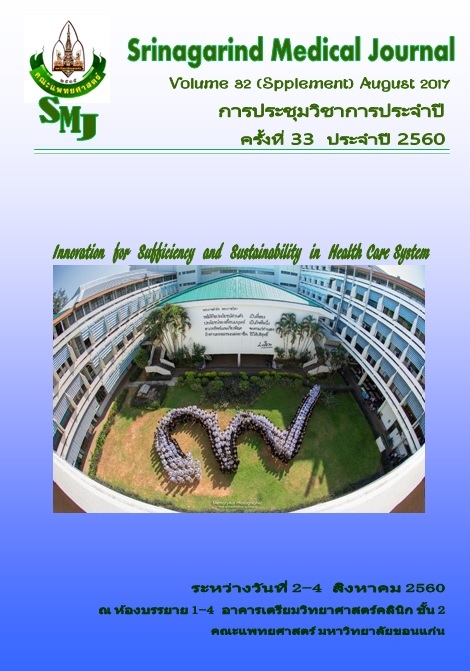Oral Liquid Preparation of Clinacanthus Nutans: Formulation Development
คำสำคัญ:
Clinacanthus nutans, topical oral solution, modified hospital formulaบทคัดย่อ
Background and objective: Leaves of Clinacanthus nutans (CN) is one of the most well-known herbal plants listed in Thai Herbal Pharmacopoeia, exerting anti-inflammatory and antiviral activities. One of its use which is currently stated in the Thai national list of essential medicine (NLEM) is topical oral applications for mouth sore from aphthous ulcer, chemotherapy and radiotherapy-induced oral ulcer or herpetic gingivostomatitis. Unacceptable appearance, odor and taste of the current hospital formula of the CN topical oral solution, listed in NLEM, indicate a need to revise the formulation. Mucoadhesive polymers are shown to improve the quality and functions of topical oral preparations. This study intended to improve the CN topical oral solution using a mucoadhesive polymer and compare with the current hospital formula. The modified formula would be registered as the hospital formula. This study aimed to modify oral bases intended to improve CN topical oral solution for use as a modified hospital formula.
Methods: The selection of CN for use as the herbal resources was first attempted. Concentrate crude extracts of CN (CNC) were obtained after maceration of dried and grinded CN in ethanol followed by evaporation. The Folin–Ciocalteu colorimetric method was used to quantify the total phenolic content of CNC using gallic acid as the standard. Apparent solubility of CNC was determined for solvent selection. Sodium carboxy methylcellulose and volatile oils are attempted to modify the formula. The modified formula was physically evaluated for its appearance, flavor and pH. In-house satisfaction was blinded evaluated at the Department of Pharmacy of a community hospital.
Results: The modified formula of CN topical oral solution was green and viscous liquid with a pH of 6-7. It contained an average total phenolic content of 0.11 mg GAE/g. There was no precipitate found in the modified formula but various small brown precipitates from the current hospital formula. All of the in-house testers (n = 10) accepted the odor and flavor of the modified formula but not those of the current hospital formula.
Conclusions: Addition of a mucoadhesive polymer and volatile oils to the current hospital formula enhance the performance of the CN topical oral solution.




